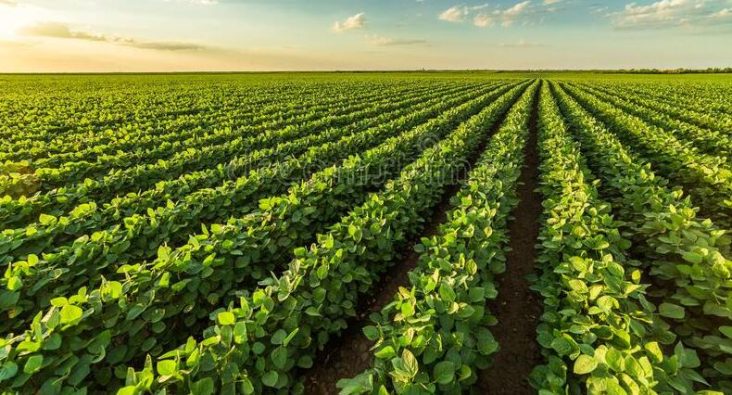Arkansas farmers expected to produce record soybean yields
by January 3, 2024 2:18 pm 1,150 views

It’s expected that Arkansas soybean yields could set a new record, with each acre yielding an estimated 53 bushels on average, said Jeremy Ross, soybean extension agronomist for the University of Arkansas System Division of Agriculture.
The increase is expected despite drought-like conditions throughout the Mississippi Delta Region in 2023. Better growing practices, including proactive irrigation, along with better plant genetics, early planting and favorable conditions for many of the state’s soybean farmers were other factors for improved yields, Ross said.
“We won’t have the final numbers until February, but there is potential for the yield average to be higher,” Ross said. “South Arkansas took it on the chin this spring with heavy rains and some very cold conditions after planting, in addition to several hailstorms in other parts of the state, but overall, it was a good year.”
The previous record average soybean yield for Arkansas was 52 bushels per acre in 2021, which was matched in 2022. The final numbers will be released by the U.S. Department of Agriculture in February. Ross said he would not be surprised if the estimate is bumped up beyond 53 bushels per acre for Arkansas.
“Each year our soybean yields just keep getting better and better, and that trends across the entire United States,” Ross said. “Looking back, we were 20 percentage points ahead of the five-year average on planting progress and that translated into the crop being mature 15 to 20 percent ahead of typically where we were.”
Many soybean farmers in Arkansas were done with harvest before Halloween and got a jump on land preparation for the 2024 planting season, Ross said. One farmer he talked to in central Arkansas said his fields were 4 to 5 bushels better across the entire farm.
“I’ve talked to several producers and some farmers say that this is the best year they’ve ever had soybean wise,” Ross said.
Dry periods helped push down fungal disease pressure until the end of the season when “it came on with a vengeance,” he said. Soybean fields planted earlier were able to fend off disease better and farmers were outrunning pests with earlier harvest, Ross noted.
Soybean fields near and north of Pine Bluff saw enough favorable weather in 2023 to bump up the state average. It wasn’t a golden year for most growers in the middle of America, though. Drought in the Midwest pushed soybean yields down in that region and created troubling low-water levels on the Mississippi River, which tripped a domino effect downstream.
Not only were grain elevators filled up at harvest time because barge traffic was limited, but fertilizer wasn’t coming in for post-harvest bed preparations when expected. Some farmers also had to leave soybeans in the field to harvest later, Ross said.
“Grain elevators were having to hold on to more than they typically do because they couldn’t get it shipped out fast enough,” Ross explained. “We really didn’t have a break in harvest. Farmers just rolled from corn to rice to soybeans, and there wasn’t a break to give elevators a chance to get grain shipped out, so everything just kind of started stacking up.”
The rice harvest was also a little better than expected, Ross said, taking up space typically reserved for soybean because it could not make it to the river for export when expected. Some farmers Ross talked to said they trucked their soybeans 50 to 75 miles farther than usual.
“There were a few hiccups and a few glitches along the way, but I think most everybody is doing pretty good now,” Ross said of the post-harvest trials of a bumper crop with low river levels.
Soybeans remain the state’s most widely grown row crop. In 2023, more than 3 million acres were harvested. The crop has a $2.38 billion value, according to USDA estimates. Arkansas traditionally is among the top 10 soybean producing states each year.
